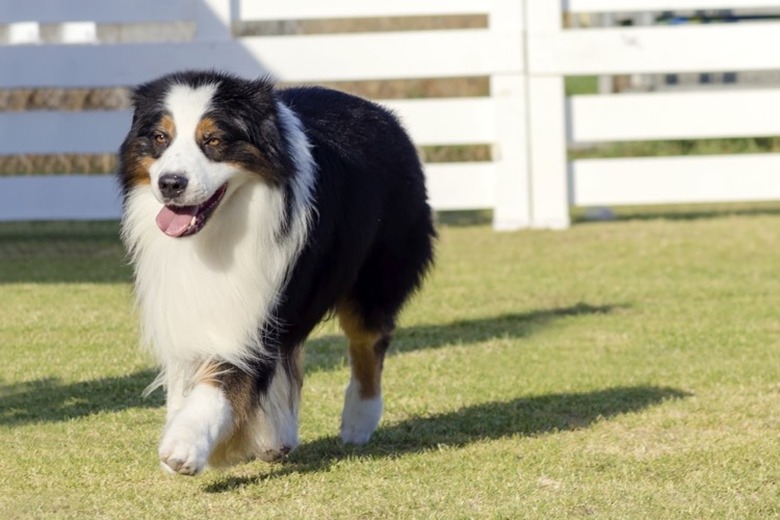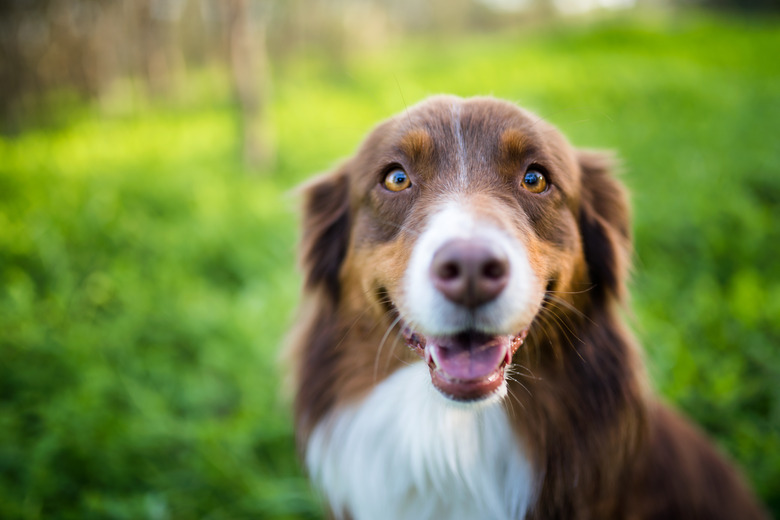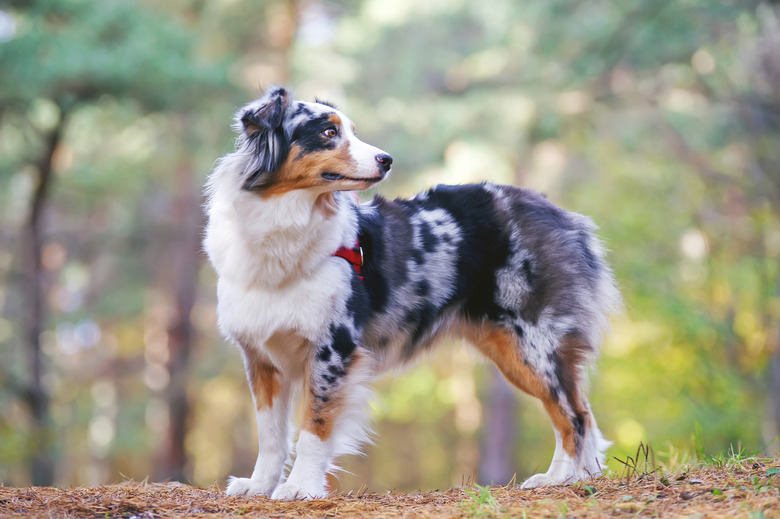Australian Shepherd Mini Vs Standard (Aussie Vs. Mini Aussie Dogs)
When comparing the Australian shepherd vs. mini Australian shepherd, you may think that the mini Aussie is simply a smaller version of the Aussie. They are very similar in appearance, and both are members of the American Kennel Club's herding group. However, they are classified as separate breeds with their own characteristics and breed standards.
In fact, the mini Aussie, which was originally called the miniature Australian shepherd when registered with the National Stock Dog Registry in the 1980s, was renamed when they were entered into the AKC Foundation Stock Service in 2011. The official breed name is now miniature American shepherd.
Mini Aussie vs. standard appearance
Mini Aussie vs. standard appearance
Size is the most obvious difference between the Aussie and the miniature Aussie. The breed standard for Australian shepherds indicates that males of the breed should be 20 to 23 inches, and females are slightly smaller, measuring 18 to 21 inches tall. The standard does not indicate a required weight, but the AKC indicates that the average weight is 50 to 65 pounds for male dogs and 40 to 55 pounds for female dogs.
The miniature Australian shepherd's breed standard requires male dogs to be 14 to 18 inches tall and female dogs to be 13 to 17 inches tall. These dogs weigh an average of 20 to 40 pounds.
Other breed appearance requirements listed in the breed standards are similar between the two dogs. Both breeds come in four main colors: blue merle, black, red merle, and red, and the standard allows white markings except for white splashing on the body and white that dominates over the main color of the dog.
Differences in temperament
Differences in temperament
Although they have plenty of similarities in terms of personality and temperament, there are some differences to consider when comparing the Australian shepherd vs. mini Australian shepherd. Breed is not a reliable indicator of temperament, but in general, both breeds are very good with children. The miniature Aussie tends to be more affectionate with her human family and other dogs than the Aussie.
When it comes to strangers, both breeds are moderately open to meeting new people, being neither hyper-vigilant nor everyone's best friend. They are also moderately protective. Both breeds love to play and are eager to please, which makes training a joy with plenty of positive reinforcement. Miniature Australian shepherds tend to be more adaptable when it comes to changes in the environment.
Grooming and exercise
Grooming and exercise
Both breeds are moderate shedders with medium-length, double coats that require at least a weekly brushing, but you can expect to groom the mini Aussie a bit more often than Aussies. The miniature Australian shepherd also drools slightly more than the Australian shepherd, although drooling is not a big concern with either breed.
When it comes to exercise, both breeds need a lot of daily exercise. They are high-energy dogs and need a lot of stimulation to stay healthy and happy. Australian shepherds love hiking and running with you and excel in sports, such as agility and herding. The miniature Australian shepherd also enjoys these activities but is better able to adapt to your lifestyle if you live in a city. If these dogs don't get the exercise and stimulation they need, they may become destructive and hard to handle.
Common health concerns
Common health concerns
Both full-sized and miniature breeds have their own unique genetic health conditions for which breeders should test to ensure they only sell healthy puppies. Required health testing for the Australian shepherd includes evaluations for hip and elbow dysplasia and an annual eye examination. Other recommended testing includes exams for the collie eye anomaly, hereditary cataracts, and multidrug sensitivity.
As with Australian shepherds, health testing requirements for miniature Australian shepherds also includes a hip and eye examination. The other required tests include DNA testing for multidrug sensitivity and progressive retinal atrophy.
References
- American Kennel Club: Australian Shepherd
- American Kennel Club: Miniature American Shepherd
- United States Australian Shepherd Association: Breed Standard
- Miniature American Shepherd Club of the USA: Breed Standard
- United States Australian Shepherd Association: Official Breed Club Health Club Statement
- Miniature American Shepherd Club of the USA: Official AKC History of the Miniature American Shepherd


